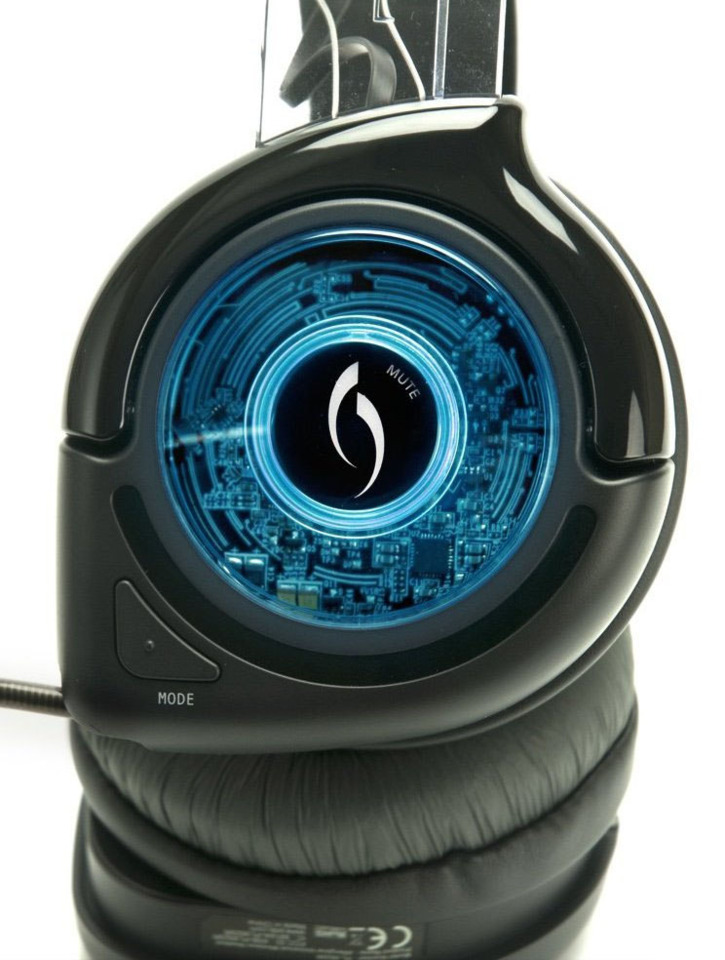PDP's Afterglow Headset Looks Cheap, Sounds Great
If you look past the superficial shortcomings of the LEDs and clear plastic headband, the Afterglow Universal Wireless Gaming Headset may surprise you.
 The audio equipment industry is full of players, big and small. Now that the former have paved the way with their latest round of wireless gaming headsets, lesser-known manufacturers are starting to pop their heads out.
The audio equipment industry is full of players, big and small. Now that the former have paved the way with their latest round of wireless gaming headsets, lesser-known manufacturers are starting to pop their heads out.
Such is PDP, with its Afterglow Universal Wireless Gaming Headset. At first glance, the LED lighting and clear plastic don't project the image of a high-end product, which it isn't. But it's not the opposite either. Thankfully, holding down the "Mode" button allows you to disable some, or all, of the lighting.
Considering the better-than-average audio performance, it's one of the best deals on the market at $89.99--a steal for a universal wireless headset. It may not be on par with our reigning champ, the A50s from Astro, but at less than a third of the price, PDP's universal wireless headset shouldn't be overlooked.
In fact, it may be the best wireless headset on the market, relative to its cost. It's hard to be picky when it comes to a wireless headset that sounds as good as similarly priced wired models from other manufacturers. The treble is clear without sounding "tinny," and the low-end frequency response (bass) manages to deliver an impact without succumbing to audio artifacts or muddiness. You may expect the worst, but you'll likely be pleasantly surprised when the audio coming out of the cans presented itself as adequate and then some.
Though you can't finely tune audio levels to your liking, you can toggle between three different modes: Pure Audio (flat EQ, blue LED), Bass Boost (red LED), and Immersive Audio (3D, bass and treble boost, green LED). Each mode is tied to a color, as represented by the LED on the tip of the microphone.
True, there's no Dolby surround sound, virtual or otherwise, but PDP contracted Media City Studio to create a propriety 3D audio solution that, in theory, provides better immersion within the soundscape than surround sound. The positional effect of the Afterglow headset's 3D audio is fair at best, though it's certainly the audio mode best suited for gaming out of the three, since it does preserve directionality.

At first, the Afterglow headset isn't exactly comfortable. The floating head-band exhibits a little too much tension, forcing the large-headed among us to struggle while attaining a reasonable fit, but it's passable. Once the band is broken in, the problem diminishes, but a better solution would have been to include a mechanism for manual fitting adjustments.
The ear pads could also use a bit of refinement. At least you have some control over the orientation: each circumaural cup rotates to account for variations in the angular relationship between your ears and skull. The primary issue with the pads lies in the padding beneath the faux-leather cover; it's altogether too stiff. The chosen padding may be a cost-cutting measure on PDP's part, but it's the least favorable element of the entire design.
Hooking up the headset is a rather simple affair: plug the receiver into an available USB port on your device of choice, and plug the audio cable into your TV. Hooking up the audio cables is a bit finicky since the connection to the receiver is always tethered, forcing you to keep your device within reach of the TV. While the most straightforward approach is to connect the 3.5mm audio cable into the headphone port of your TV, you can also use the included RCA cable should you lack a headphone port. If you use RCA (composite) cables to connect your device to the TV, the RCA adapter/cable allows pass-through in order to use the sound coming from the TV simultaneously with the headset.
 Thankfully, it couldn't get any simpler with a PC, because the headphones and microphone are automatically detected by Windows 7 right out of the box. Simply connect the USB receiver, and you're good to go; you needn't plug in the 3.5mm cable.
Thankfully, it couldn't get any simpler with a PC, because the headphones and microphone are automatically detected by Windows 7 right out of the box. Simply connect the USB receiver, and you're good to go; you needn't plug in the 3.5mm cable.
Chat functionality isn't quite as good when compared to the surprising quality of the headphones. The microphone supports noise-canceling functionality, but it managed to consistently pick up background noise regardless. The quality of voice transmission varied during multiplayer sessions, but a quick local recording on a PC proved that the microphone captures voices quite well. As always, results will depend on players' Internet connections.
When you first gaze upon the Afterglow headset, the transparent polycarbonate outer band and the bright blue LEDs are slightly off-putting. They are so pronounced that you'd assume PDP was leaning on the gimmick of the design to move units, rather than the audio quality. Though there may be some truth to that, the performance of the headset shouldn't be discounted for superficial reasons alone. The Afterglow Universal Wireless Gaming Headset is an excellent value at $89.99, and if the cost of high-end headsets has thus far prevented you from jumping into the wireless ring, you could do a lot worse than PDP's offering. It's not the best headset on the market, but it's the best wireless gaming headset you can purchase for under $100.
Got a news tip or want to contact us directly? Email news@gamespot.com
Join the conversation